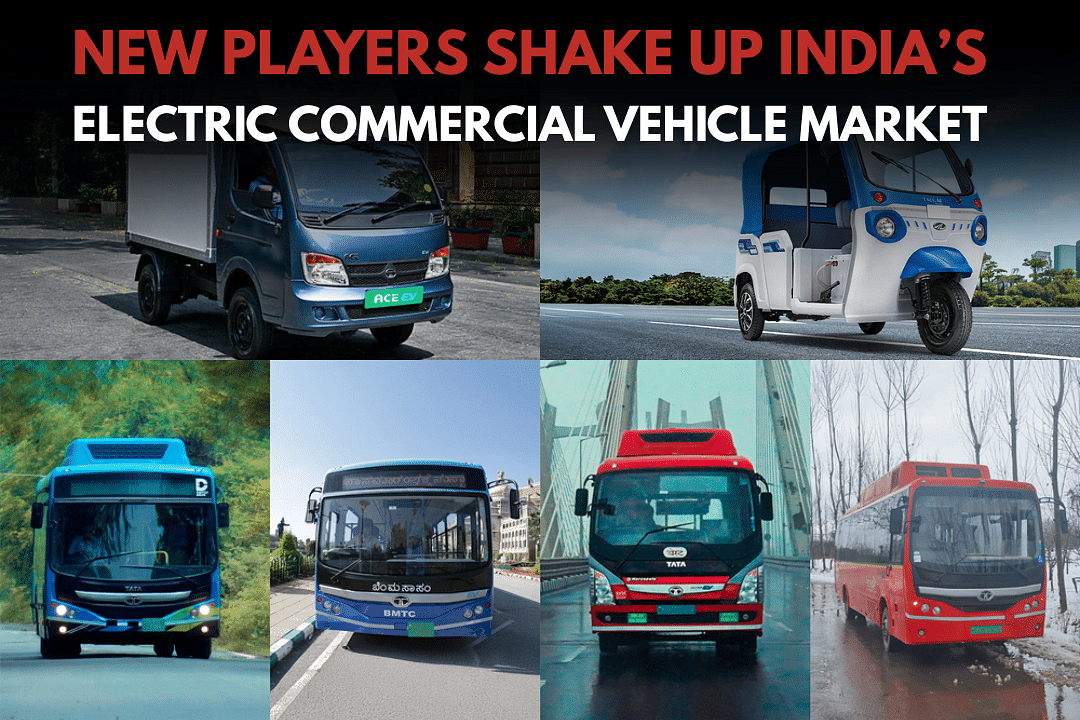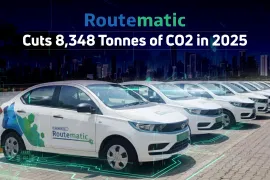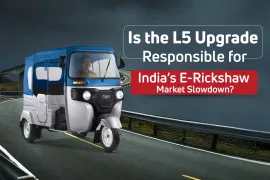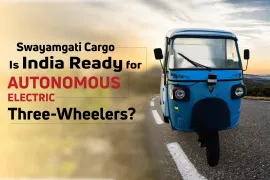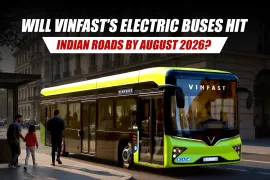India’s electric commercial vehicle (CV) market is shifting. What was once a space led firmly by Tata Motors is now seeing new players close the gap fast.
In FY25, Tata’s market share dropped from 65.91% to 48.46%, as per FADA’s latest retail data. Tata still leads with 4,286 electric CVs sold, but its falling share shows one thing: this market is no longer one-sided.
Despite this, the top three players: Tata Motors, Switch Mobility, and Mahindra, still control 69.27% of the electric CV space. Switch Mobility, the EV arm of Ashok Leyland, posted the strongest rise. Its market share jumped from 2.19% to 11.09%, with 981 electric CVs delivered in FY25. This growth came mainly from state transport contracts and deployments in Tier 1 and Tier 2 cities.
Mahindra Group, including Mahindra Last Mile Mobility Ltd, also saw growth. Their combined share rose to 9.72% from 6.09%, with 860 units sold. Their focus? Electric three-wheelers and compact e-vans. These vehicles work well in last-mile delivery and passenger movement, especially in busy urban areas.
Meanwhile, Olectra Greentech and PMI Electro Mobility are scaling fast in the electric bus segment. Olectra sold 710 units in FY25, capturing an 8.03% share. PMI followed with 482 units, taking 5.45% of the market.
Both firms won state-level tenders, but not without issues. Recently, Olectra faced a setback in Maharashtra, where the state transport authority canceled a large tender, citing irregularities in the process.
High Growth, Unstable Base
Despite these gains, the electric CV market stays volatile. In May 2025, retail sales grew 84.36% year-on-year, touching 1,019 units. That sounds impressive. But just two months earlier, in March 2025, the picture was different.
Electric CV penetration fell to 1%, down from 2.3% in March 2024. Tata’s sales in March alone dropped 80.47% year-on-year. These shifts are not random, they stem from a market sensitive to policy changes and funding cycles.
Still, experts see growth ahead. As Srikumar Krishnamurthy, Vice President and Co-Group Head, Corporate Ratings at ICRA, explains:
“We expect that it is a matter of time. The shift towards a higher penetration is going to happen.”
ICRA projects EV penetration in buses to reach 30% by FY30, up from 7–8% in FY25. For light commercial vehicles, penetration is expected to rise from 1–2% today to 12–16% by FY30.
This growth, Krishnamurthy says, will be driven by:
“The continued support from the government through the PM E-DRIVE Scheme and the extension of the support system to the entire ecosystem, wherein technology related aspects are being taken care into the incentive bracket.”
What Comes Next?

Tata, Switch, and Mahindra still lead. But the direction is clear: the electric CV segment is opening up.
Government support, dropping battery prices, and interest in clean urban mobility are encouraging new players. At the same time, tender outcomes, execution delays, and pricing pressure still make the road bumpy.
Yet, the transition is under way. And as the ecosystem matures, India’s electric commercial vehicle market will look far more competitive, and far more diverse.
For more articles and news, stay updated with 91trucks. Subscribe to our YouTube channel and follow us on Facebook, Instagram, and Linkedin for the latest videos and updates from the automotive world!
Web Stories
Latest Electric News
Categories
91trucks is a rapidly growing digital platform that offers the latest updates and comprehensive information about the commercial vehicle industry.
